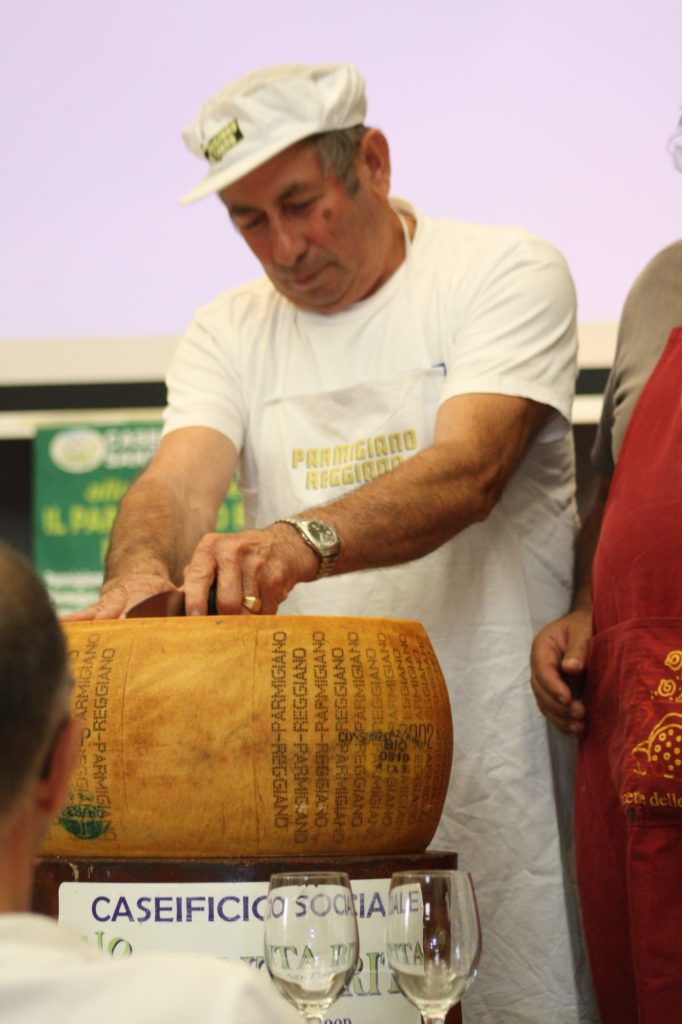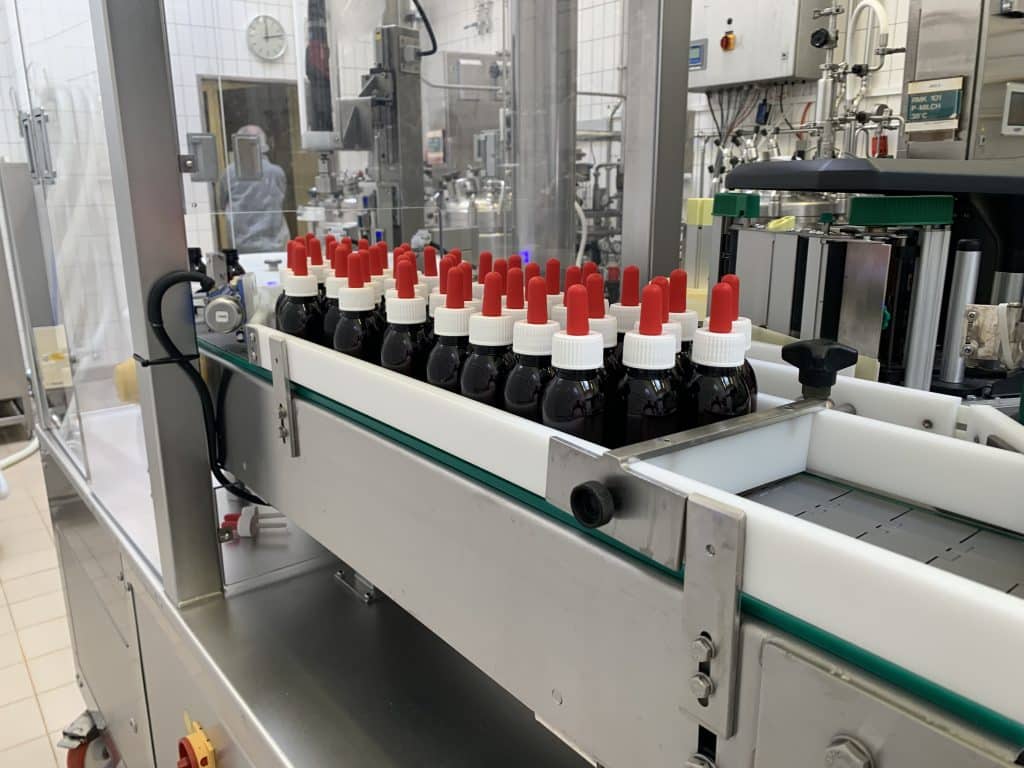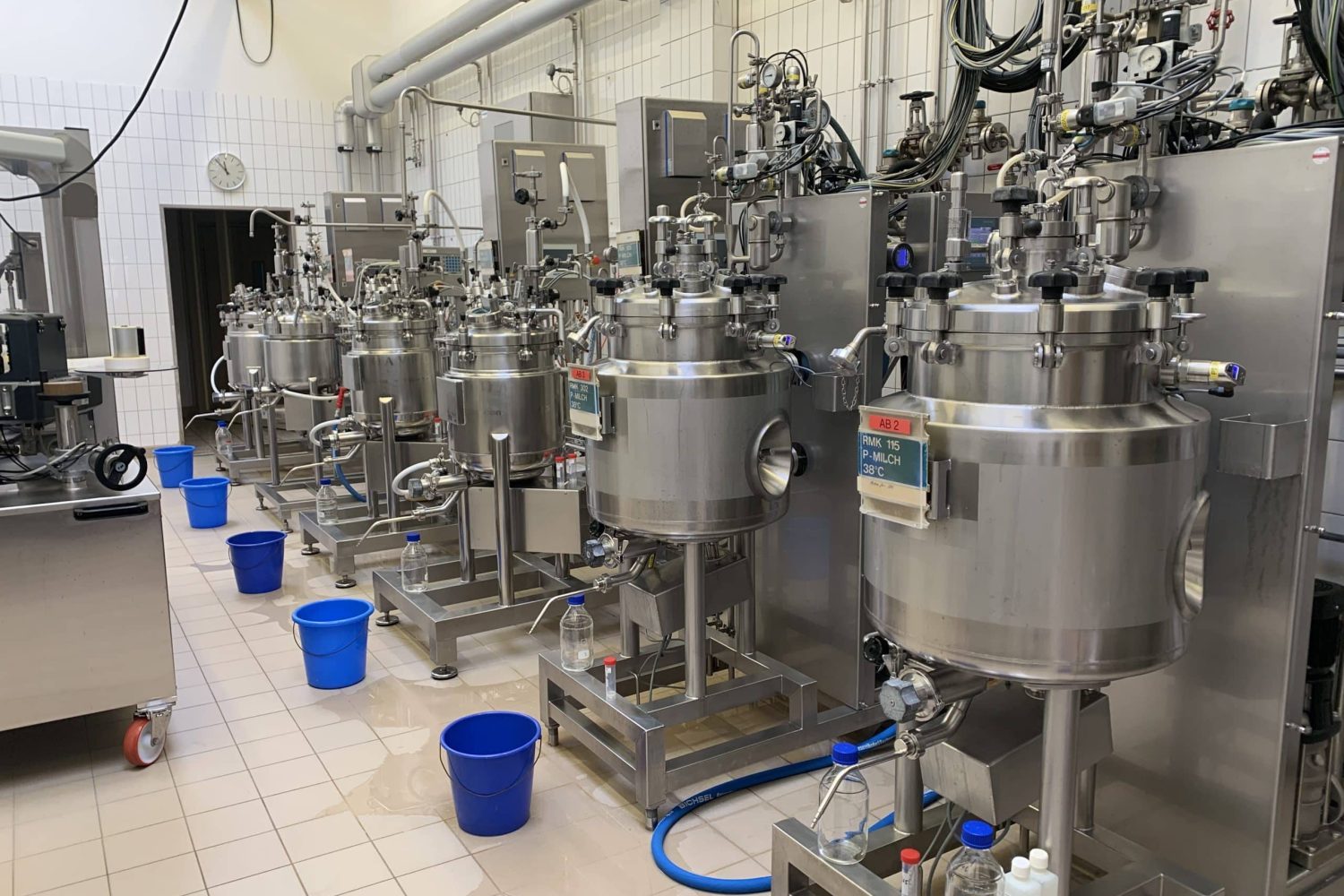…however, rich in different genetic strains. Research into a tradtional starter culture for Gouda cheese, which was maintained through daily back-slopping, showed that only two bacterial species are present, namely Lactococcus lactis and Leuconostoc mesenteroides (Erkus et al., 2013). This contradicts your feeling of ecological stability as well as the robustness of a cheese ecosystem. The crux lies in the diversity of strains, genetic lines within the L. lactis in particular. Although it looks like there is no diversity, the seven strains, together with the many viruses, ensure the survival of the ‘wild starter culture’. Such starters are made by ‘back-slopping’: you inoculate a remnant of the cheese starter into a new batch of milk, which could be pasteurised or boiled before inoculation. Another way of back-slopping is via the cheese whey, which is drained off during the cheese-making process. Whey-starters are still used in Swiss cheese dairies. Important European cheeses use back-slopping (Neviani et al., 2024). Backslopping has traditionally been seen as a way of obtaining starter cultures that can ‘take a beating’. But what is this empirical knowledge based on?

The inspector cuts a Parmesan cheese made with a whey starter culture (Slow Food cheese event, Bra, Italy)
The regulatory role of bacteriophages (= viruses)
Cheesemakers have a bad relationship with bacteriophages, and as a cheese maker, you must guarantee to use an active starter culture that quickly converts the milk sugar into lactic acid. You must vary within different starter cultures to combat the phages. Starter culture contamination with phages kills your lactic acid bacteria, rising problems during cheese making. This mood of action is right, if the starter culture you bought, contained only a few strains, causing your lactic acid bacteria to die off.
Nevertheless, wild starter cultures are full of phages, but together with the many bacterial strains, they build a unique and dynamically stable ecosystem. This is based on two things: (a) the strains can functionally replace each other, so if one strain fails, the next one is ready to take over its task; (b) phages use the ‘kill-the-winner’ principle and eliminate a bacterial strain that is too successful and therefore threatens to become dominant. The functional interchangeability of the strains ensures that the starter culture remains effective. Somerville et al. (2024) have also coined a term for this: ‘strain redundancy’ or ‘functional interchangeability of genetic strains’. Other strains in the starter culture network take over the tasks and regulate the conversions without any loss of function. Therefore, the term ‘network redundancy’ is more appropriate, as it indicates that the network, the sum of all its parts, provides dynamic stability. The word ‘resilience’, or robustness based on a dynamic balance, is also appropriate here. That is the beauty of your own wild starter culture.
There were, however, conditions for using such a on-farm starter culture for months. It was important that the farm woman (who usually did this work) worked consistently, rhythmically and hygienically. Milk for the starter culture was often boiled shortly to kill the unwanted milk bacteria, a fixed percentage of the previous day’s starter culture was used, and the starter culture was stored at a constant temperature, for example in a culture box. David Asher, who promotes ‘natural cheese making’, works with raw milk. The most important condition he sets for his own wild starter is the fresh, warm cow’s milk, to which you add a percentage of the (old) starter to prepare next day starter.
Intermediate form between natural and industrial starter cultures
Since not every farmer was able to produce their own starter cultures on a daily basis, industrial starter cultures were developed. These consist of selected bacterial strains that are combined and often used as freeze-dried starter cultures. In Switzerland, an intermediate form between farm-produced and industrially produced starter cultures is present. Lactic acid cultures for Swiss professional cheese makers are prepared at Agroscope under very strict, consistent and hygienic conditions. Nothing is left to chance in the production process, which uses sterile skimmed milk powder. In Switzerland, lactic acid cultures are still produced from bacterial strains that were found in Switzerland and only propagated in Switzerland. This means that Switzerland has its own gene bank for starter cultures. Agroscope (in Bern-Liebefeld) sent the starters to local cheese makers, who make their typical cheeses in the Swiss regions. Each cheese has a different bacterial composition. Most cheese makers have a weekly subscription and receive a bottle of starter culture, which they continue to cultivate themselves every day. This increases the stability of the end product and reduces waste and failed cheeses. A little bit of yourself and a little bit from the professional makers of starter cultures.

Ready-to-use starter is filled into sterile jars for transport (Agroscope, Bern-Liebefeld)
Misled by results?
Several studies have shown that back-slopped starter cultures are poor in bacterial species. In Switzerland, microbiologists from Zurich determined at the Sennerei Bachtel (near Zurich) that the starter culture for raw milk quark consisted of only one species, namely L. lactis. In the backslopping process for grain-based kefir at the Raw Milk Company (the Netherlands), it also became clear that we are dealing with one bacterial species, again L. lactis (Baars et al., 2023). This result can be misleading, if you do not dig deeper to a level below the species level, i.e. to the strains or lineages and their genetic significance. It showed, that at the strain level, there is much greater functional diversity than at the species level. Moreover, we do not (yet) know anything about the phages associated with this system, as little research has been done.
Apparently, a starter culture is already ‘complete’ when two species complement each other and pass the ball to each other. The starter culture for Gouda cheese mentioned above therefore only has two mesophilic bacterial species. The research by Somerville et al. (2024) also concerns Swiss cheese, where a thermophilic starter culture is used. Here, too, the mixture is species-poor, but rich in strains of Streptococcus thermophilus. Plus, of course, the bacteriophages, which act as orchestra conductors, turning the bacterial strains on and off.
Conclusion
There is a difference in the use of cheese cultures for traditional cheese making and modern Gouda cheese production. Modern means relying on a daily input of bacteria from outside, provided by professional culture makers. Traditional is based on a multitude of strains of 1 or 2 types of lactic acid bacteria, which, however, have a wide genetic range and belong to your farm. This allows you to give your cheese its own character in terms of taste, ripening and consistency, which goes beyond the impact of the raw cheese milk itself. To achieve this daily, you need not only courage, but also regularity, knowledge and constant hygiene. Bacteriophages do the rest.
Literature
- Baars, T., van Esch, B., van Ooijen, L., Zhang, Z., Dekker, P., Boeren, S., … & Kort, R. (2023). Raw milk kefir: microbiota, bioactive peptides, and immune modulation. Food & Function, 14(3), 1648-1661.
- Erkus, O., De Jager, V. C., Spus, M., van Alen-Boerrigter, I. J., Van Rijswijck, I. M., Hazelwood, L., … & Smid, E. J. (2013). Multifactorial diversity sustains microbial community stability. The ISME journal, 7(11), 2126-2136.
- Neviani, E., Levante, A., & Gatti, M. (2024). The Microbial Community of Natural Whey Starter: Why Is It a Driver for the Production of the Most Famous Italian Long-Ripened Cheeses?. Fermentation, 10(4), 186.
- Somerville, V., Thierer, N., Schmidt, R. S., Roetschi, A., Braillard, L., Haueter, M., … & Engel, P. (2024). Genomic and phenotypic imprints of microbial domestication on cheese starter cultures. Nature communications, 15(1), 8642.




